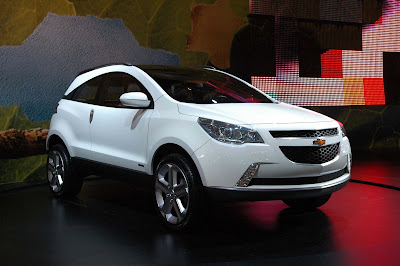


The answer is that they are Fiesta predecessors. Verve was the concept model over which Fiesta was conceived. As for the green and orange and black vehicles, respectively Ka Beauty and Ka Beast, they anticipate the new generation of Fiesta in Brazil and South America. External rear mirrors in the concept-Ka vehicles are identical to Verve's. Better saying, they are a little different, since they have changed when they became mass-production pieces in order to fit the new Fiesta. Have a look.



Now, check the same rear mirror in Ka Beauty. Even the colour is the same:

Beast uses the same rear mirrors. This is an indication suppliers in Brazil have developed these pieces. Since the car will be built in Mexico, it means one of these two things: or Brazilian suppliers will send the rear mirrors to Mexico or Brazil will produce Fiesta for South American countries, while Mexico will take care of North and Central America.
Another common part among the car is the steering wheel, the same one used in Fiesta. Have a look:





If any of you has any information on this, please feel free to contact us at the e-mail address at the top of the page. As for the readers that do not have any information but the one we have, especially if you are from South America, be aware: the new Fiesta will soon be around, and it has already taken too long.
Source: Ford and MotorTips







































